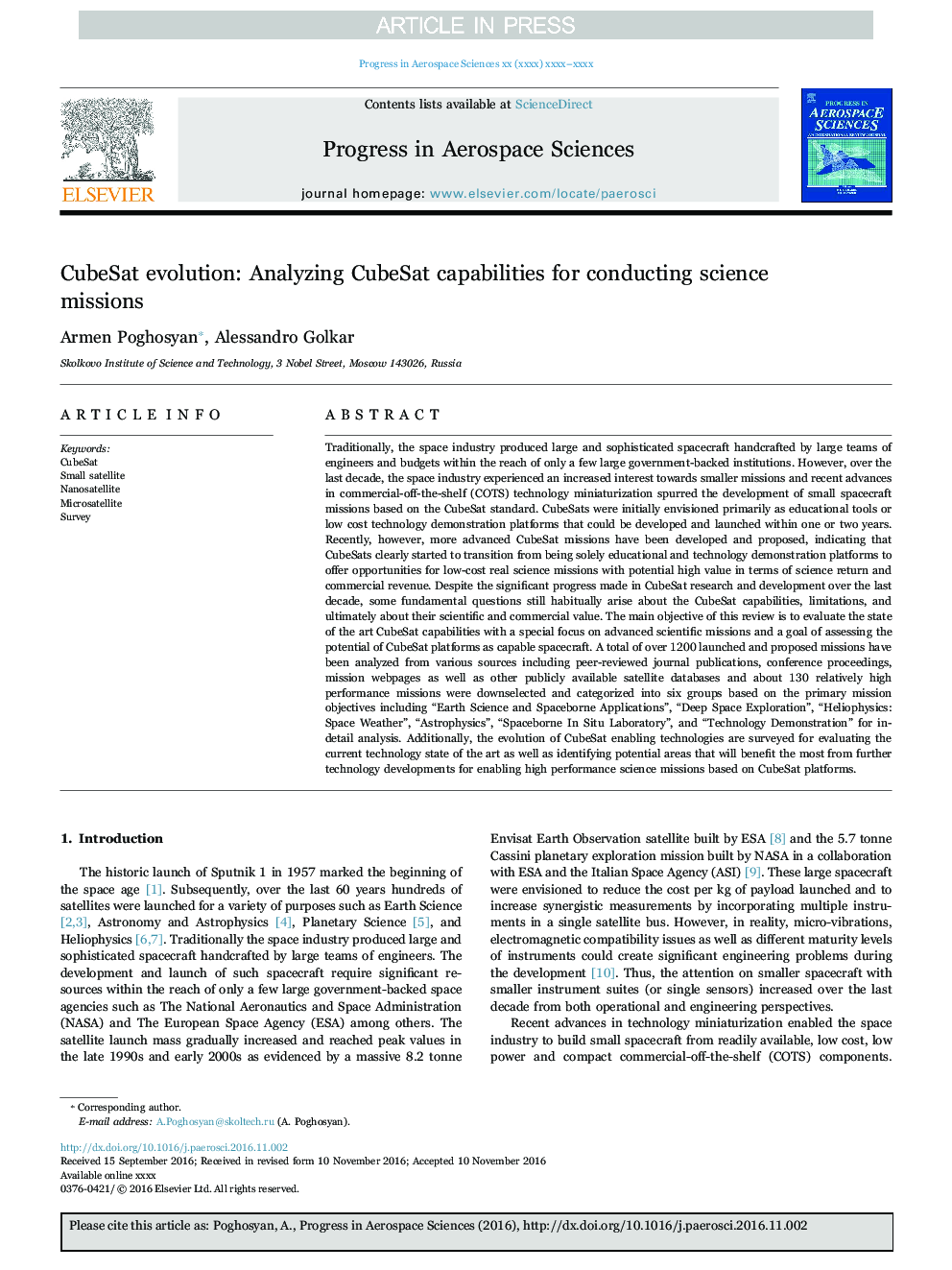| کد مقاله | کد نشریه | سال انتشار | مقاله انگلیسی | نسخه تمام متن |
|---|---|---|---|---|
| 5473116 | 1520148 | 2017 | 25 صفحه PDF | دانلود رایگان |
عنوان انگلیسی مقاله ISI
CubeSat evolution: Analyzing CubeSat capabilities for conducting science missions
دانلود مقاله + سفارش ترجمه
دانلود مقاله ISI انگلیسی
رایگان برای ایرانیان
کلمات کلیدی
موضوعات مرتبط
مهندسی و علوم پایه
سایر رشته های مهندسی
مهندسی هوافضا
پیش نمایش صفحه اول مقاله

چکیده انگلیسی
Traditionally, the space industry produced large and sophisticated spacecraft handcrafted by large teams of engineers and budgets within the reach of only a few large government-backed institutions. However, over the last decade, the space industry experienced an increased interest towards smaller missions and recent advances in commercial-off-the-shelf (COTS) technology miniaturization spurred the development of small spacecraft missions based on the CubeSat standard. CubeSats were initially envisioned primarily as educational tools or low cost technology demonstration platforms that could be developed and launched within one or two years. Recently, however, more advanced CubeSat missions have been developed and proposed, indicating that CubeSats clearly started to transition from being solely educational and technology demonstration platforms to offer opportunities for low-cost real science missions with potential high value in terms of science return and commercial revenue. Despite the significant progress made in CubeSat research and development over the last decade, some fundamental questions still habitually arise about the CubeSat capabilities, limitations, and ultimately about their scientific and commercial value. The main objective of this review is to evaluate the state of the art CubeSat capabilities with a special focus on advanced scientific missions and a goal of assessing the potential of CubeSat platforms as capable spacecraft. A total of over 1200 launched and proposed missions have been analyzed from various sources including peer-reviewed journal publications, conference proceedings, mission webpages as well as other publicly available satellite databases and about 130 relatively high performance missions were downselected and categorized into six groups based on the primary mission objectives including “Earth Science and Spaceborne Applications”, “Deep Space Exploration”, “Heliophysics: Space Weather”, “Astrophysics”, “Spaceborne In Situ Laboratory”, and “Technology Demonstration” for in-detail analysis. Additionally, the evolution of CubeSat enabling technologies are surveyed for evaluating the current technology state of the art as well as identifying potential areas that will benefit the most from further technology developments for enabling high performance science missions based on CubeSat platforms.
ناشر
Database: Elsevier - ScienceDirect (ساینس دایرکت)
Journal: Progress in Aerospace Sciences - Volume 88, January 2017, Pages 59-83
Journal: Progress in Aerospace Sciences - Volume 88, January 2017, Pages 59-83
نویسندگان
Armen Poghosyan, Alessandro Golkar,